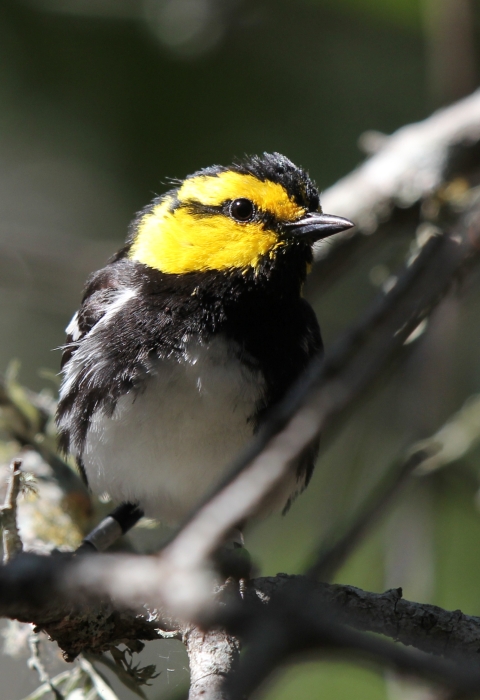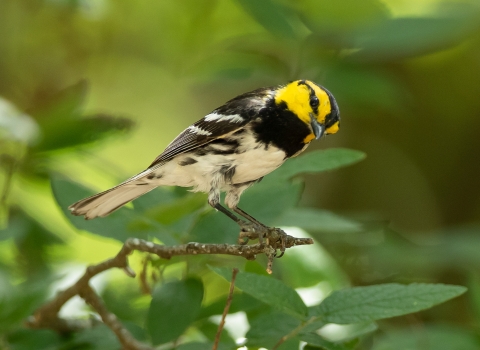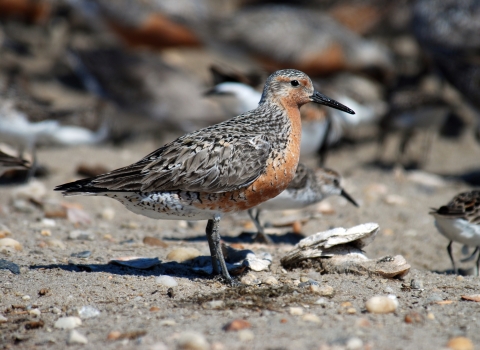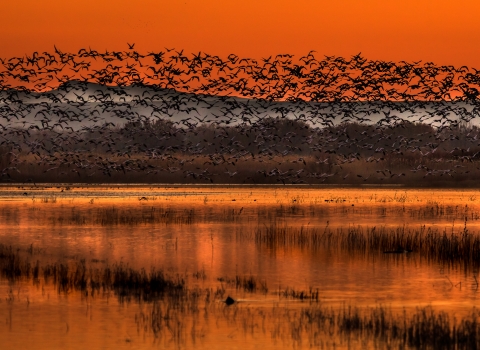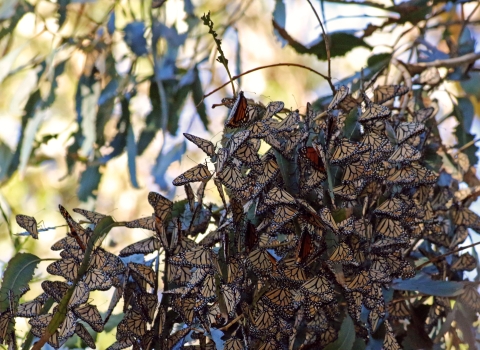Few people know the rolling hills of Balcones Canyonlands National Wildlife Refuge in Texas as well as Kandace Glanville and Paris Phelps.
These two field technicians have hiked almost every inch of the refuge’s 27,000 acres. They’ve climbed up and down canyons, scaled fences, and shoved their way through brush dense enough to rip ones clothes. They’ve discovered hidden karst caves and animal bones, they’ve seen their fair share of snakes and feral hogs. Their boots have been soaked through with dew, and they’ve been poked by many a cactus.
For what, you may ask? To gather vital information about bird populations on the refuge in what is called a point count survey.
What Are They Counting?
Point count surveys measure how many birds live in an area, which in turn helps U.S. Fish and Wildlife Service biologists determine whether current habitat management work is effective. At Balcones Canyonlands, nestled in the Texas Hill Country, we’re focused on two songbirds: the endangered golden-cheeked warbler and the recently recovered black-capped vireo. We established the refuge specifically to protect the breeding habitat of these two birds, so knowing how many of them are using the refuge is crucial.
Gathering these data is an intensive process, certainly not for the faint of heart. Every day for three months, Kandace and Paris woke before sunrise and hiked 4–6 miles. They went to over 750 pre-established points on the refuge, stood at each spot for three minutes, and counted how many birds they heard singing. Now, their findings are being analyzed by FWS biologists.
What Their Numbers Tell Us
“Our objective is to ensure that the population is either stable or increasing for the next 15 years,” Zone Biologist Jim Mueller says of the golden-cheeked warbler numbers. They did the first golden-cheeked warbler survey in 2012 and plan to do them every year. That way, if there is a downward trend in the population, biologists can detect it and address the problem early on. The black-capped vireo was taken off the federal Endangered Species list in 2018, so scientists will monitor the population for the next 12 years to ensure that it stays on the path to recovery.
Working in the Field
The birds occupy two different habitats. Golden-cheeked warblers live in Ashe juniper woodlands and black-capped vireos live on the edges of woods and shrublands. Each habitat presents unique challenges for field techs on the ground. When listening for golden-cheeks, think: steep inclines and constantly ducking and dodging your way through branches.
“Sometimes you’re like swimming through the junipers and it takes a long time to get from one point to the next,” Kandace says.
For black-capped vireos, the challenges include watching for snakes and avoiding pokey cacti. In both habitats, it takes grit and mental toughness just to get through each day, especially because working with birds means that you wake up before they do (and they wake up EARLY).
“It’s not always so fun to wake up in the dark, and go venture out into the forest with just a headlamp,” Paris says.
But the job comes with some perks, like getting to be outside and having access to parts of the refuge that are closed to the public. Surveying in the spring also means the wildflowers are blooming.
For the birds
Healthy habitat, like the lands and waters protected at national wildlife refuges across the United States, are vital to ensuring migratory birds and imperiled wildlife continue to thrive in the wild.
North America has lost nearly 3 billion birds since the 1970s, but you can help bring birds back!
You can support refuges by volunteering on public lands or buying a Federal Duck Stamp — 98 cents of every dollar goes directly into the Migratory Bird Conservation Fund to purchase or lease wetlands and wildlife habitat for inclusion in the National Wildlife Refuge System.
Other ways to help migratory birds include planting pollinator gardens and learning more about birds in your community.
Adventure awaits in nature near and far. Find your local refuge or national fish hatchery.
